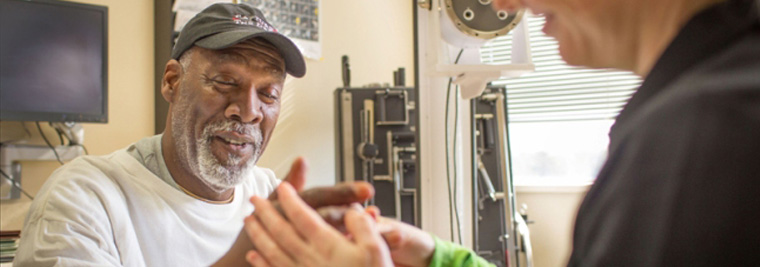Recently published research from the team at the Curtis National Hand Center explored an important component of treating finger hyperextension by studying the effect of increasing graft size during surgical treatment and repair. The study sought to help surgeons understand how large a hemihamate graft can be used for reconstruction before having a negative impact on the joint motion of the finger.
Finger hyperextension happens when fingers are bent backward and overstretch the ligament. This type of injury can happen frequently in sports, but also as a result of a fall. Less severe injuries can be treated through rest, ice, and compressions, but injuries that are more extreme may require surgery.
“The Relationship Between Hemihamate Graft Size and Proximal Interphalangeal Joint Flexion for Reconstruction of Fracture-Dislocations: A Biomechanical Study” was published in the Journal of Hand Surgery (American). The research team included River M. Elliott MD, Suresh K. Nayar MD, Aviram M. Giladi MD, MS, Christopher L. Forthman MD, Brent G. Parks MS, and Kenneth R. Means, Jr., MD from the Curtis National Hand Center at MedStar Union Memorial Hospital.
There are several surgical procedures for finger fracture-dislocations, hemihamate arthroplasty (HHA) being one of the favorable options to treat this type of injury when primary repair isn’t possible. There are a few disadvantages to using HHA, but technical difficulty remains a large hurdle to its use. Using a larger graft can diminish some of the difficulties of the surgery, which can increase its usage and positive patient outcomes.
The research team simulated middle finger fracture-dislocations by cutting 50% of the palmar surface of the middle finger base in cadaver hands. A graft was harvested from the bone situated on the lower outside edge of the hand to reconstruct the volar lip of the middle finger joint and was downsized by 2-mm increments for each trial. Fluoroscopy and digital imaging software were used to measure maximum motion and bending for each graft size.
The study concluded that nonanatomical hemihamate grafts produce a significant biomechanical flexion block only at extreme sizes. The research team suggests not sizing the graft more than 3-mm beyond the normal sized middle finger volar lip in order to avoid a significant impact on finger flex. These findings may make HHA a less technically challenging procedure for clinicians, as larger grafts are less inclined to fracture and can tolerate more robust and repeated fixation if needed. This can have positive implications for patient outcomes in the future.
This study was funded by The Raymond M. Curtis Research Foundation, The Curtis National Hand Center, Baltimore, MD.
Journal of Hand Surgery (American), 2018. DOI: 10.1016/j.jhsa.2018.09.017

